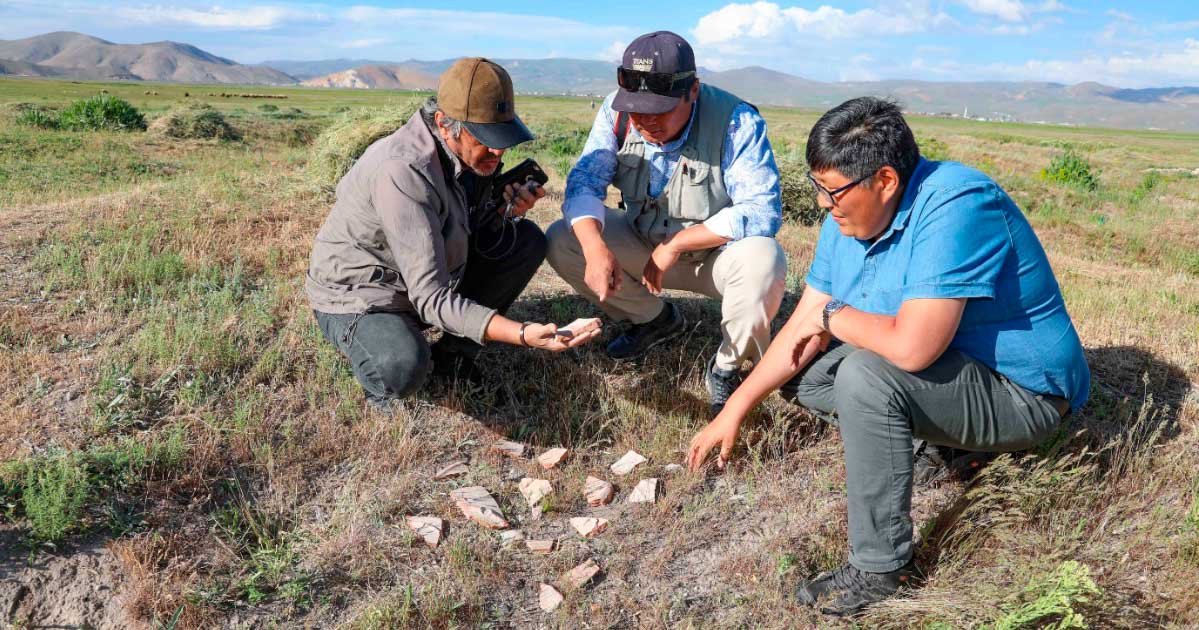Turkish and Mongolian scientists may have found the remains of a long-lost Khan palace in eastern Turkey that they believe was built by Genghis Khan’s grandson, Hulagu Khan.
Hulagu Khan was the ruler of the short-lived Ilkhanid state in the 1260s AD. A report in Live Science stated that archaeologists working at the Van Province excavation site near Çaldıran probably found the historically documented Khan palace, which was constructed between 1260-1265.

The Turkish Hulagu Khan Palace and the Ilkhanate State
Hulagu Khan (reigned 1256-1265) is notoriously associated with the brutal sacking of Baghdad in 1258, which destroyed much of the city and its rich historical heritage. The Khan’s wrath on the city resulted in the destruction of the Grand Library of Baghdad, which contained countless manuscripts and books on mathematics, astronomy, physics, philosophy from the Islamic Golden Age (8th century onward). After Baghdad was sacked, the city’s leader, Caliph Al-Musta’sim Billah, was executed.
The Ilkhanate (literally meaning subordinate khanate or state) state emerged in the 1220s and Hulagu Khan, son of Tolui Khan, served as the first supreme ruler of the Ilkhanate from 1251. Centered in Persia, the peak Ilkhanate state included territory in modern-day Iraq, Tajikistan, Turkey and Pakistan. The Ilkhanid state didn’t last long and fell apart during the ravages of the Black Death in the 1330s.

The Evidence Found at The Khan Palace Site Was Considerable
Currently, a group of eight experts from Turkey and Mongolia are carrying out archaeological surveys on the Çaldıran Plain under the leadership of Professor Ersel, head of Izmir Katip Çelebi University’s Turkish-Islamic Archaeology Department. Over the course of the last month, they have discovered the remains of an ancient caravanserai ceramic kiln, and ceramics from the Ilkhanid period. The caravanserai kiln was located on Turkey’s historical overland Silk Road, and had not been previously registered in the cultural assets inventory, reported the Daily Sabah . Caravanserais were roadside inns along major trade routes like the Silk Road that doubled as centers for the exchange of goods, ideas, and culture.
“We have found a very important caravanserai. There are some building remains that indicate the existence of a city here. Research shows that the city was founded to the east of the caravanserai. We have discovered many pottery artifacts in the area of the city. Similar examples of these ceramics can be only seen in Karakorum, Mongolia. Therefore, this data clearly shows that there is an Ilkhanate structure in Anatolia,” explained Professor Çağlıtütuncigil.
According to the Turkish Daily Sabah news outlet , historians on the team are examining historical records that mention the presence of a palace and summer capital in the region. However, these records did not specify where exactly the palace was located. The 13th-century Armenian historian, Kirakos of Ganja (1200-1271 AD), mentioned a palace that lay somewhere between Lake Van and Lake Urmiya. Another Armenian historian, Grigory of Akanc (1250-1335 AD), wrote that the Ilkhanate state had a summer capital and palace northeast of Lake Van at Ala Taq.
The Khan palace that the current group recognizes as Hulagu Khan palace was heavily looted, making it difficult to corroborate evidence. “The remains of the Khan’s palace complex [are] now fully ruined,” excavation team member Munkhtulga Rinchinkhorol, an archaeologist with the Mongolian Academy of Sciences, told Live Science .
Despite the looting, the team has found pieces of glazed roof tiles, bricks, tri-color glazed ceramic and porcelain fragments.
Though the final truth of the Khan palace in Van Province, Turkey will take some time, the team’s credentials are perfect and so they will likely be proven correct before long. Since the Van region was important to the westward moving Mongols, we are likely to hear more exciting news from the team sooner than later.








